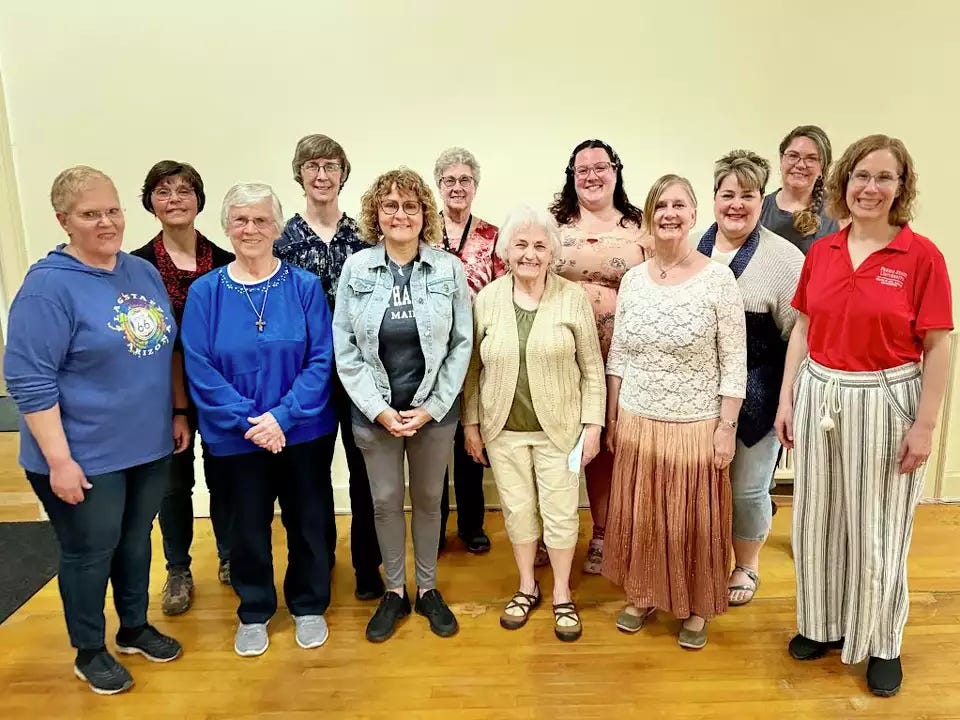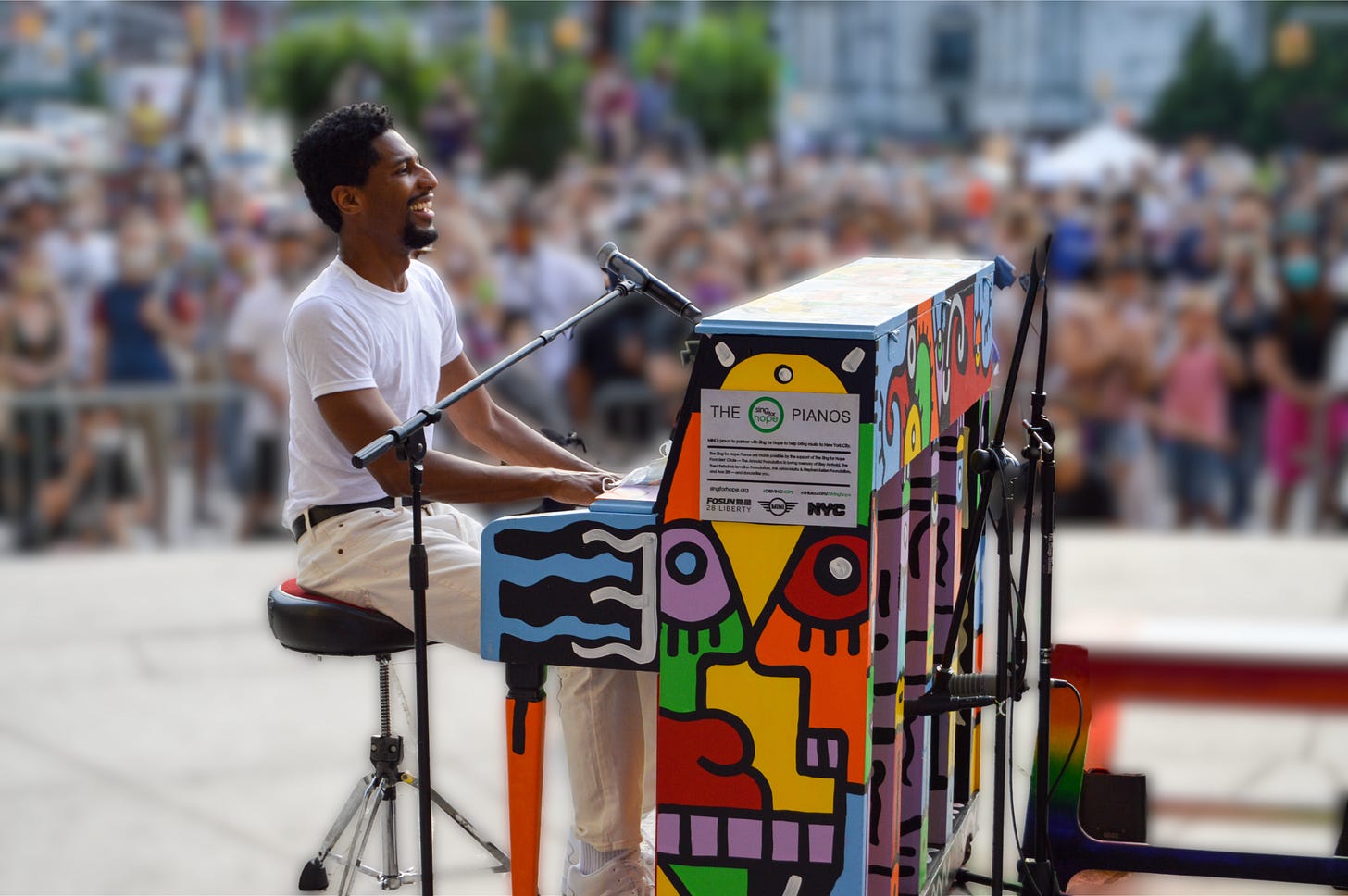The performers at the four-day Ossipee Music Festival that I recently attended were extraordinary, though fewer than half of them made their living from music. Most were teachers, mechanics, farmers, bartenders, and retired park rangers. There were groups of fans that knew every lyric, every transition, and every pause for certain bands but what stood out was how the festival created a shared space among these loosely gathered tribes, a space where rhythm and melody opened the door to something wider. The music did not just entertain. It drew people toward one another. You did not just listen. You joined.
In between performances and workshops, nearly everyone took to the adjacent Ossipee River, drifting downstream on a parade of inflatable rafts, tubes, and kayaks. A four-piece band played from a sandbar as the current carried us past, and this armada became its own kind of gathering - slow-moving, soft-edged, and full of moments where strangers bumped into one another and smiled, joined by rhythm and river.
There is something mysterious about the way music can draw strangers into fleeting communities, where a kind of quiet generosity takes hold and faith in being human feels a little easier to come by. That feeling reminded me of a story I came across about the Comfort Choir in Big Rapids, Michigan. Founded by Helen Brandt, a former oncology nurse, Comfort Choir is an all-volunteer a cappella group that sings in elder-care homes, hospice centers, and private rooms where the usual forms of comfort may fall short. They sing in small groups, unaccompanied, and their audience may be lying in bed, eyes closed, or drifting in and out of memory. But the presence of song shifts the room. People soften. Sometimes they hum along. Sometimes they weep. Sometimes they simply rest more deeply, held by something unspoken and connective.

This resonates with what the neurologist and musicologist Oliver Sacks observed. Music can reach parts of the brain untouched by language or reason, and it often remains intact when memory, identity, and speech begin to fade. Sacks called music a fundamental part of being human, something that can restore connection when isolation takes hold, and that continues to move us even in the darkest corners of illness or loss.
Helen's Comfort Choir is not alone. Around the country, there are musicians doing this kind of quiet work, not always organized, not always visible, but deeply moving.
In hospitals across the U.S., volunteers with Musicians On Call bring live music to patients, families, and staff. They play in hallways and patient rooms, often at odd hours and for no more than a few minutes at a time. The point is not the length of the set but the quality of the presence. A song is played, smiles are exchanged, and something yields, if only for a moment. Many of these musicians are not headliners or touring professionals. They are local artists, music teachers, and hobbyists. But their impact, measured in bedside stillness or the easing of breath, is unmistakable.

In another corner of this ecosystem are the Threshold Choirs. These are small ensembles of mostly women who sing at the bedsides of those nearing the end of life. They meet beforehand to center themselves, then go to homes or care centers to sing for people they may not know, guided only by the intention to soothe and accompany. They choose simple songs, sung softly, with no expectation of thanks. Their motto is kindness made audible.
The Folk School movement carries this spirit too, though its focus is more on preservation than care. Across Appalachia, the Ozarks, and in rural corners of the country, folk schools keep alive old songs and playing styles through community instruction. Students come not to become stars, but to join a tradition. A fiddle class on a weeknight, a shape-note workshop in a town hall, a porch jam with elders who know ballads that no one has written down. This is musical memory passed hand to hand, like sourdough or seeds.
And then there is Sing for Hope in New York City, which places artist-painted pianos in parks, public housing courtyards, and hospital lobbies. Anyone can play them. Some do with hesitation, others with abandon. When a child discovers a melody on a street piano or a subway operator pauses between shifts to play something remembered, the boundaries between art, a public offering, and care quietly disappear.

In Kyiv, Ukraine, even in the shadow of war, music continues to surface in public spaces, not as distraction, but as quiet defiance and shared solace. On one of my last visits to the city, you could hear cellists playing on subway platforms where civilians sometimes take shelter from shelling, violinists offering Bach in public parks, and folk duos performing beside donation boxes for displaced families. These are not organized concerts. They are acts of presence - small offerings of grace, of resilience, of something normal in a place that no longer is. The music isn’t there to entertain as much as to remind people that they are still here, still part of something, still human.
What all these examples have in common is a refusal to separate music from life. The musicians do not necessarily arrive to be admired. They arrive to accompany, to witness, to evoke, and connect. In the quiet of a hospice room, the hum of a hospital corridor, the back room of a folk school, a city street, or in a war zone, music is a form of public service. It steadies the breath. It builds community. It reminds people that they are not alone.
I recognize the feeling. I play mandolin in a local band called The Leftovers, a name that came from a post-Thanksgiving gathering in our village where we first played together while neighbors brought whatever food was still in their fridges. We play our own version of American roots music and often volunteer for community concerts, fundraisers for kids' camps, farmer’s markets, village celebrations, lobster festivals, and heritage days. None of it is fancy. There are no green rooms or stage crews. Sometimes we’ll get gifted with bags of zucchini, kale, hand-made soaps, and baked goods. But the act of sharing music, especially when it's part of a collective moment, carries weight. A song offered with sincerity can draw people in like gravity, not just to listen but to belong. It reminds them they’re part of something - and so are we.
Music, delivered with care and delight, has a quiet and unmistakeable power. It has a way of stitching people into something larger. It invites connection, nurtures trust and takes its place within the infrastructure of communities. We may not always notice but it is yet one more powerful force contributing to the durability of the communities in which we live.
*Durable Good will be off for the month of August. See you back here in September.




